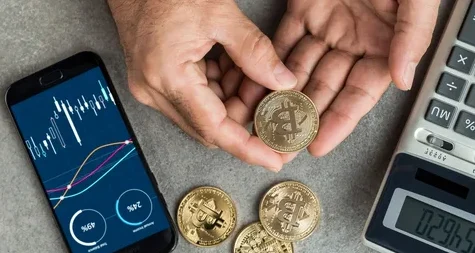The digital revolution has opened unprecedented opportunities for entrepreneurs and developers looking to create their cryptocurrency. With the global cryptocurrency market continuing to expand, understanding how to create your cryptocurrency has become increasingly valuable for businesses, startups, and individual innovators. Whether you’re developing a utility token for your business, launching a community-driven project, or exploring blockchain technology, this comprehensive guide will walk you through every essential step of the cryptocurrency creation process. From initial planning and technical development to legal compliance and market launch, you’ll discover the tools, resources, and strategies needed to bring your digital currency vision to life in today’s competitive cryptocurrency landscape.
Understanding Cryptocurrency Fundamentals
Before diving into the technical aspects of cryptocurrency development, it’s crucial to understand what you’re creating. A cryptocurrency is essentially a digital or virtual currency secured by cryptographic techniques, making it nearly impossible to counterfeit or double-spend. Most cryptocurrencies operate on decentralized networks based on blockchain technology, which serves as a distributed ledger enforced by a network of computers.
When planning to create your cryptocurrency, you’ll need to decide between creating a coin or a token. Coins operate on their blockchain networks, like Bitcoin or Ethereum, while tokens are built on existing blockchain platforms. For beginners, creating a token is typically more accessible and cost-effective than developing an entirely new blockchain from scratch.
The success of your cryptocurrency project depends heavily on solving real-world problems or providing genuine utility to users. Without a clear value proposition, even technically sound cryptocurrencies struggle to gain adoption and maintain value in the competitive digital asset market.
How to Create Your Cryptocurrency: Essential Steps
Planning Your Cryptocurrency Project
The foundation of any successful cryptocurrency begins with thorough planning. Start by defining your project’s purpose, target audience, and unique selling proposition. Consider what problem your cryptocurrency will solve and how it will differentiate itself from existing digital assets.

Develop a comprehensive whitepaper that outlines your project’s technical specifications, economic model, roadmap, and team credentials. This document serves as your project’s blueprint and is essential for attracting investors, developers, and early adopters to your cryptocurrency ecosystem. Research your competition thoroughly to understand market gaps and opportunities. Analyze successful cryptocurrency projects in your niche to identify best practices and potential pitfalls to avoid during your development journey.
Technical Development Options
When it comes to actually building your cryptocurrency, you have several technical pathways to choose from. The most accessible option for beginners is creating a token on an existing blockchain platform like Ethereum, Binance Smart Chain, or Polygon.
For Ethereum-based tokens, you’ll primarily work with ERC-20 standards, which provide a framework for creating fungible tokens. The development process involves writing smart contracts using the Solidity programming language, though various no-code platforms now exist for non-technical entrepreneurs.
If you’re creating a more complex cryptocurrency with unique features, you might consider developing your blockchain. This approach requires significantly more technical expertise, time, and resources, but offers complete control over your cryptocurrency’s functionality and governance structure.
Legal Compliance and Regulatory Considerations
Navigating the regulatory landscape is one of the most critical aspects of launching a legitimate cryptocurrency project. Regulatory requirements vary significantly by jurisdiction, and failure to comply can result in severe legal consequences.
Consult with cryptocurrency lawyers to understand securities regulations in your target markets. In the United States, the SEC scrutinizes new cryptocurrency projects to determine whether they qualify as securities, which would subject them to additional regulatory requirements.
Consider implementing Know Your Customer (KYC) and Anti-Money Laundering (AML) procedures from the project’s inception. These compliance measures not only help meet regulatory requirements but also build trust with potential users and exchange platforms.
Development Costs and Timeline
Financial Investment Requirements
The cost to create your cryptocurrency varies dramatically depending on your chosen approach and project complexity. Simple token creation on existing blockchains can cost anywhere from $1,000 to $20,000, while developing a custom blockchain can require investments of $100,000 or more.
Factor in additional expenses such as smart contract auditing, legal consultation, marketing campaigns, and ongoing development costs. Many successful cryptocurrency projects spend significant resources on community building and marketing, often exceeding their initial development costs.
Consider whether you’ll bootstrap the project, seek venture capital funding, or conduct a token sale to raise development funds. Each funding approach has different implications for your project’s governance structure and regulatory compliance requirements.
Development Timeline Expectations
Creating a basic cryptocurrency token can take anywhere from a few weeks to several months, depending on your technical expertise and project complexity. More sophisticated projects with custom blockchains, advanced smart contracts, or unique consensus mechanisms can take 6-12 months or longer to develop and test thoroughly.
Allow additional time for security auditing, which is essential for any cryptocurrency project handling real value. Professional smart contract audits can take several weeks and may identify issues requiring significant code revisions.
Plan for post-launch development and maintenance, as successful cryptocurrency projects require ongoing updates, bug fixes, and feature enhancements based on community feedback and market demands.
Marketing and Launch Strategy
Building Community and Awareness
Successful cryptocurrency projects invest heavily in community building long before their official launch. Establish a strong social media presence across platforms like Twitter, Telegram, Discord, and Reddit to engage with potential users and gather feedback during development.
Content marketing plays a crucial role in educating your target audience about your cryptocurrency’s benefits and use cases. Create educational blog posts, video tutorials, and infographics that explain your project’s value proposition in accessible language.
Consider partnering with cryptocurrency influencers and industry publications to increase your project’s visibility. However, ensure all promotional activities comply with relevant advertising and securities regulations in your target markets.
Exchange Listings and Liquidity
Getting your cryptocurrency listed on reputable exchanges is essential for providing liquidity and enabling widespread adoption. Research exchange listing requirements and fees early in your development process, as some platforms have extensive due diligence procedures.

Start with smaller, specialized exchanges before pursuing listings on major platforms like Coinbase or Binance. Building trading volume and community trust on smaller exchanges can strengthen your application for larger exchange listings. Consider implementing liquidity pools on decentralized exchanges (DEXs) to provide immediate trading opportunities for your cryptocurrency users. DEX listings are typically faster and less expensive than centralized exchange listings, though they may offer lower visibility.
Security and Best Practices
Security should be your top priority throughout the cryptocurrency development process. Implement multi-signature wallets, conduct thorough smart contract audits, and establish bug bounty programs to identify and address potential vulnerabilities.
Develop comprehensive backup and recovery procedures for your project’s infrastructure and funds. Many cryptocurrency projects have failed due to security breaches or lost private keys, resulting in permanent loss of funds and user trust.
Establish transparent communication channels with your community regarding security practices and any potential risks associated with using your cryptocurrency. Honest communication about limitations and risks helps build long-term trust with users.
Conclusion
Learning how to create your cryptocurrency opens doors to innovative business opportunities and technological advancement. While the process involves significant technical, legal, and financial considerations, the potential rewards can be substantial for well-executed projects that solve real problems and provide genuine value to users.
Success in cryptocurrency development requires careful planning, technical expertise, regulatory compliance, and sustained community engagement. Whether you’re creating a utility token for your business or developing the next groundbreaking digital asset, following the comprehensive steps outlined in this guide will help you navigate the complex cryptocurrency development landscape.
Ready to begin your cryptocurrency creation journey? Start by defining your project’s core purpose and assembling a team of skilled developers, legal advisors, and marketing professionals who can help bring your vision to life in the competitive digital asset marketplace.




















